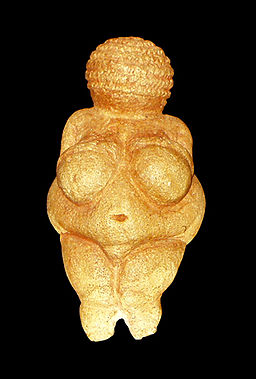First, I must save my hide, so please bear with the disclaimer.
DISCLAIMER
These posts aren’t meant to be educational – they merely present the view of an artist. In fact, a specific artist, that’s yours truly. This is why I request you to consider these posts as a work of fiction inspired by historical facts. I am not sure if I can keep the historical facts correct to the t, and I take no responsibility if you fail an exam because you thought you could use my posts to study.
Remember that I am not an art historian, an art critic, or even an art teacher. I am an artist – and in this book (if it becomes one,) I’ll be presenting the history of art from my own tainted and distorted viewpoint.
The Upper Paleolithic Period (or the time between 50K to 10K years ago,) was the time when invading homo sapiens had gotten rid of the neanderthals in Europe and they were doing new stuff all the time. This is why between 1900 and 1950, archaeologists found art done by them. This art was created in material that was easily available at that time, namely animal bones, mammoth tusks, wall-paintings and so on.
Two Important Artworks of the Upper Paleolithic Period:
In my opinion two extremely important works that have been discovered by archaeologists and that may be classified as art are:
• The Lion Man (made of mammoth tusk)
• The Willendorf Venus (made of limestone colored with red ochre)
An Extra, Non-arty Nugget:
And two important inventions of this time are:
• Sewing and shoes (Check out a 50,000 year old needle.)
• Flutes made of bones (Check out some paleolithic flutes.)
We aren’t really interested in the inventions (except when they led to art,) so quite selfishly, we’ll only speak about the Lion Man and the Willendorf Venus.
Putting the Lion Man First (and why?)
Lion Man: The Beginning of Human Art
While everyone else may disagree with me, I think that the Lion Man or the Lowenmensch figurine, which stands a little more than a foot tall, is the first example of human art. In my opinion, the timeline of art history begins with the Lion Man.
Here’s the Lion Man

The Lion Man: Image Credit: Thilo Parg / Wikimedia CommonsLicense: CC BY-SA 3.0.
But why is Lion Man Art?
My reasons are simple: The Lowenmensch figurine is an example of human imagination (thus creativity) used to create a visual expression, that has both aesthetic and emotional appeal. The cave paintings are depiction of what was “seen” – and so there isn’t enough imagination, individual or collective, that would make me see them as art.
(Check out Chapter 1 for the definition of art and art history.)
And Why not the zillion Venuses? Why aren’t they art?
Note: Before the term Venus floods your mind with images from renaissance paintings and you start imagining slim and beautiful young women with streaming blonde hair – Read about the Paleolithic Venuses so that you and I are on the same page.
Weren’t the Venuses a Product of Human Imagination?
As an artist I believe that the Venuses (including the Willendorf Venus) weren’t a product of imagination either – mostly because the way their bodies are sculpted, you need to have seen the effect of gravity on a corpulent human body to be able to sculpt that. The Venus of Hohle fels is more from imagination, I think – and yet, it could also be an inability to reproduce the real effect of corpulence, aging, and gravity, merely due to artistic incompetence.
But Willendorf Venus? Isn’t it art? Everyone says it is.
Here’s the Willendorf Venus:

Venus of Willendorf: Image Credit: Oke / CC BY-SA
Ok. Let me call Willendorf Venus art but for another reason. I’ll call it art because of its apparent uselessness. Remember Oscar Wilde had once said: “All Art is Useless.” Since we love to take quotes of famous men and women as gospel truth, we can use Oscar Wilde’s statement to confirm that Willendorf Venus is indeed art.

“All art is useless.” – Oscar Wilde
The Willendorf Venus depicts an unusual skill of execution – and for the reasons we call Portraiture art – we can (and should) also call the Willendorf Venus a piece of art.
So is the Lion Man a better example of pre-historic art than the Willendorf Venus?
Yes, I believe it is. The head of Lion placed on the body of a man is clearly symbolic and it requires certain degree of imagination fueled by thought. That the lions and the sabers could bring a mammoth down, is something that would make humans revere the Lion and want to be “like” a lion, and from that emanates the creativity that makes such a figurine possible.
This is why for me, dear readers, the art history timeline starts at the Lion Man – and this is why this book and its contents are quite unreliable.
The next chapter (Chapter 3) will tell us the story of the Lion Man’s creation.
Read “Chapter 1: Defining Art History and Answering the Question of Time” here.
